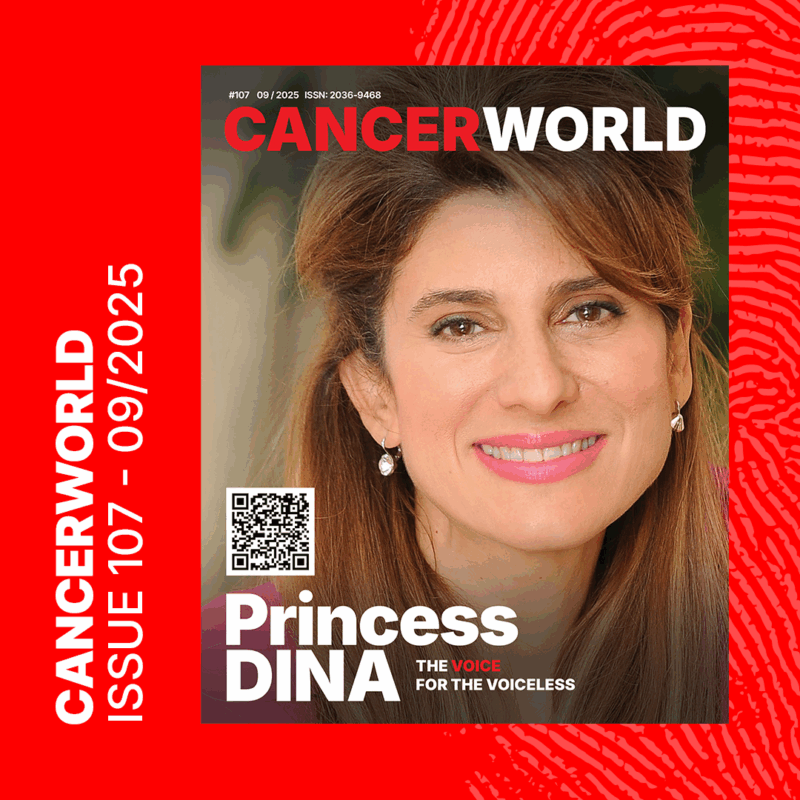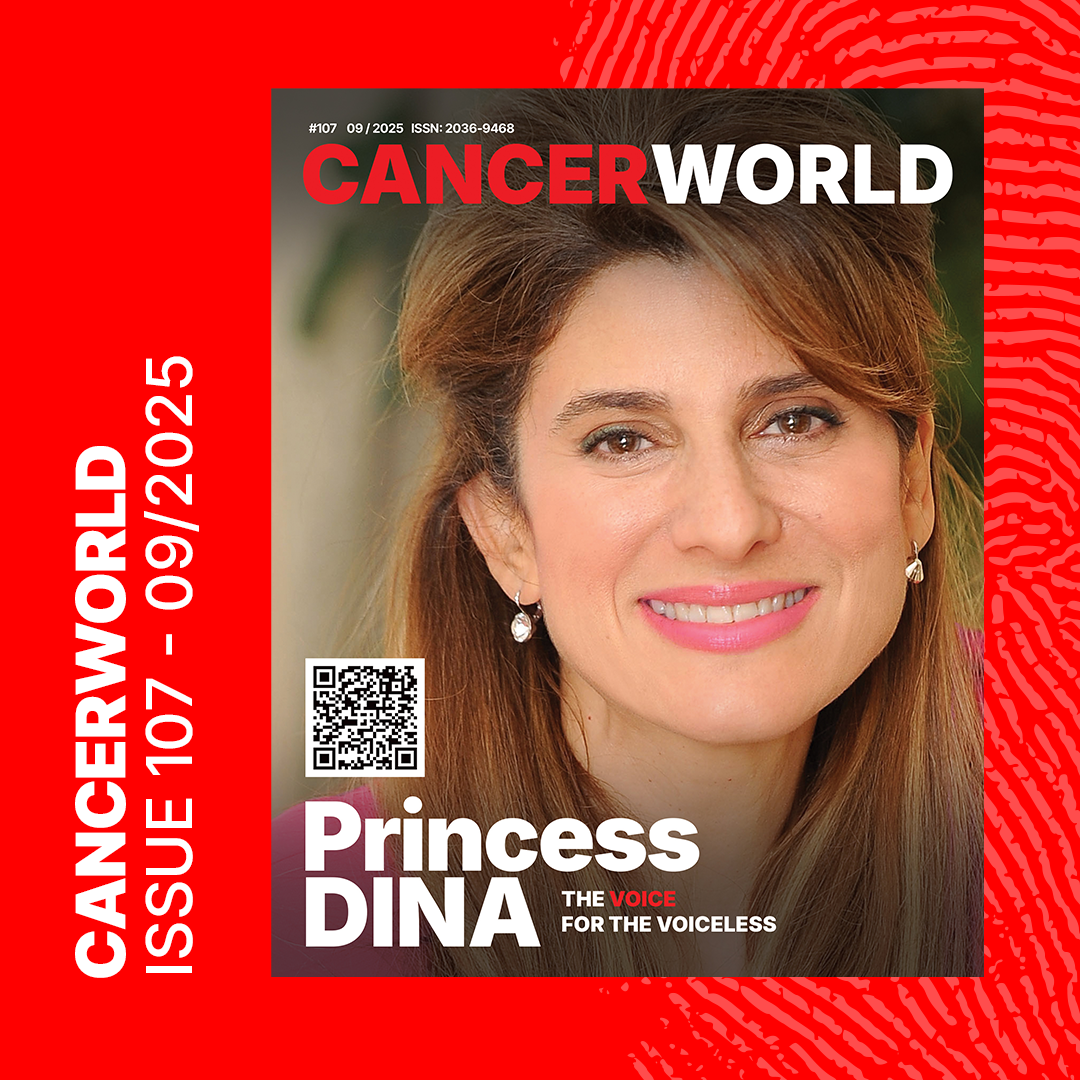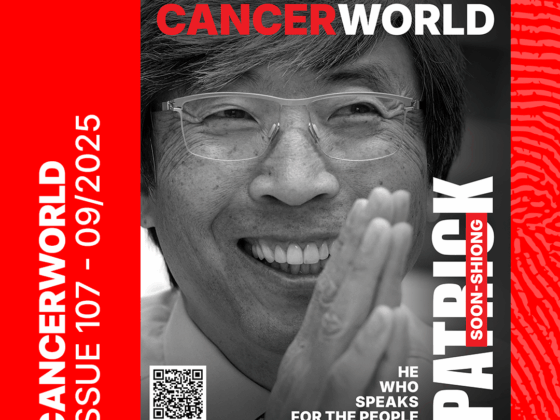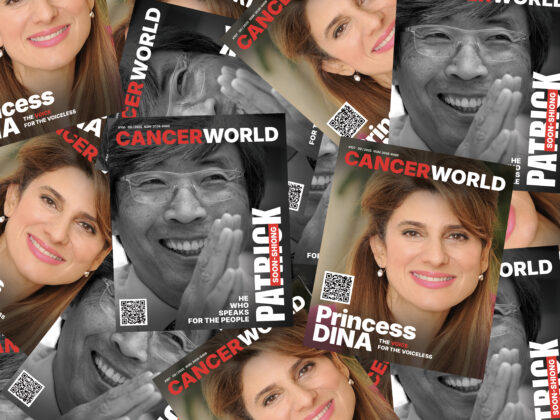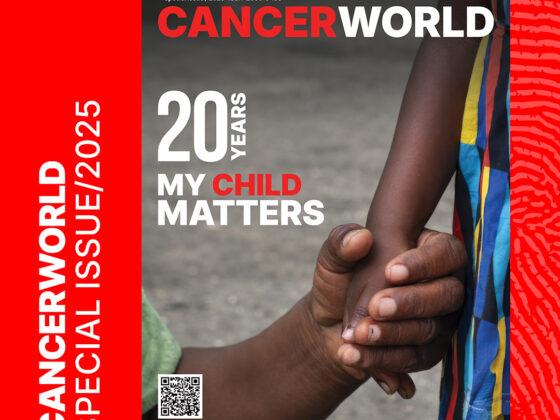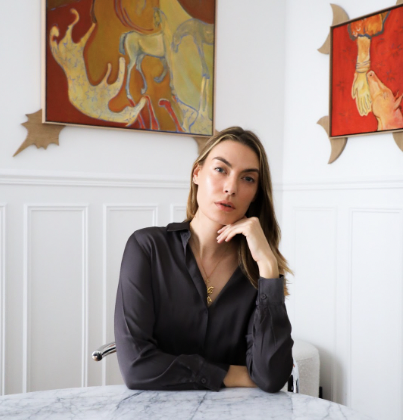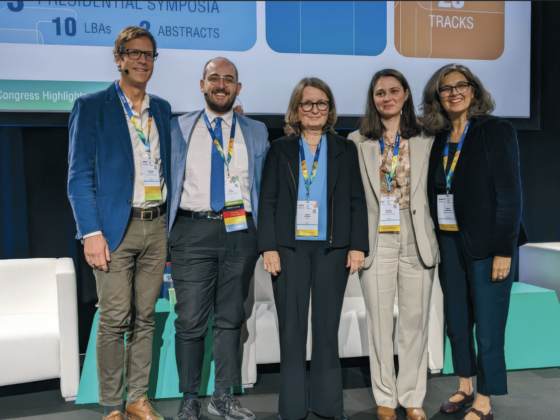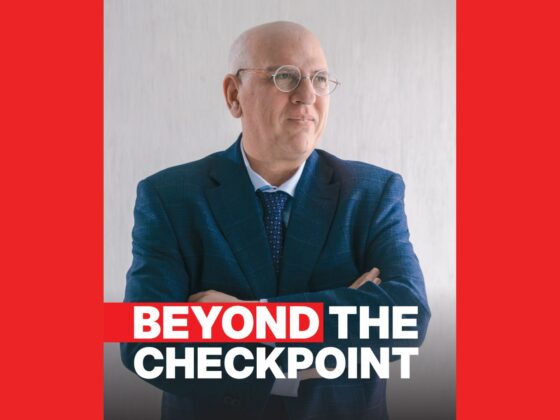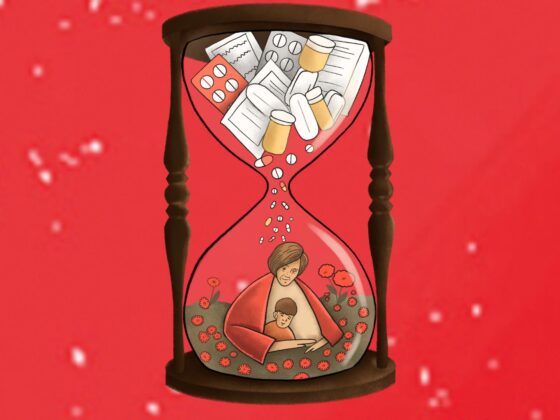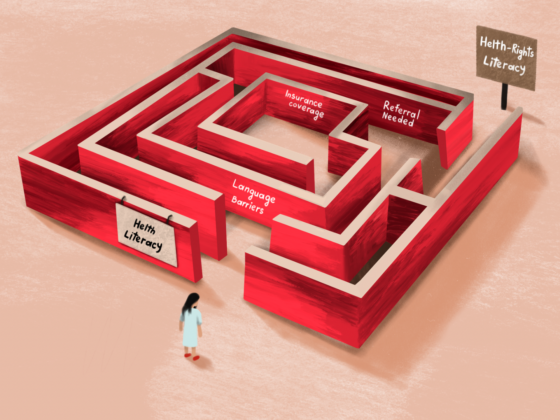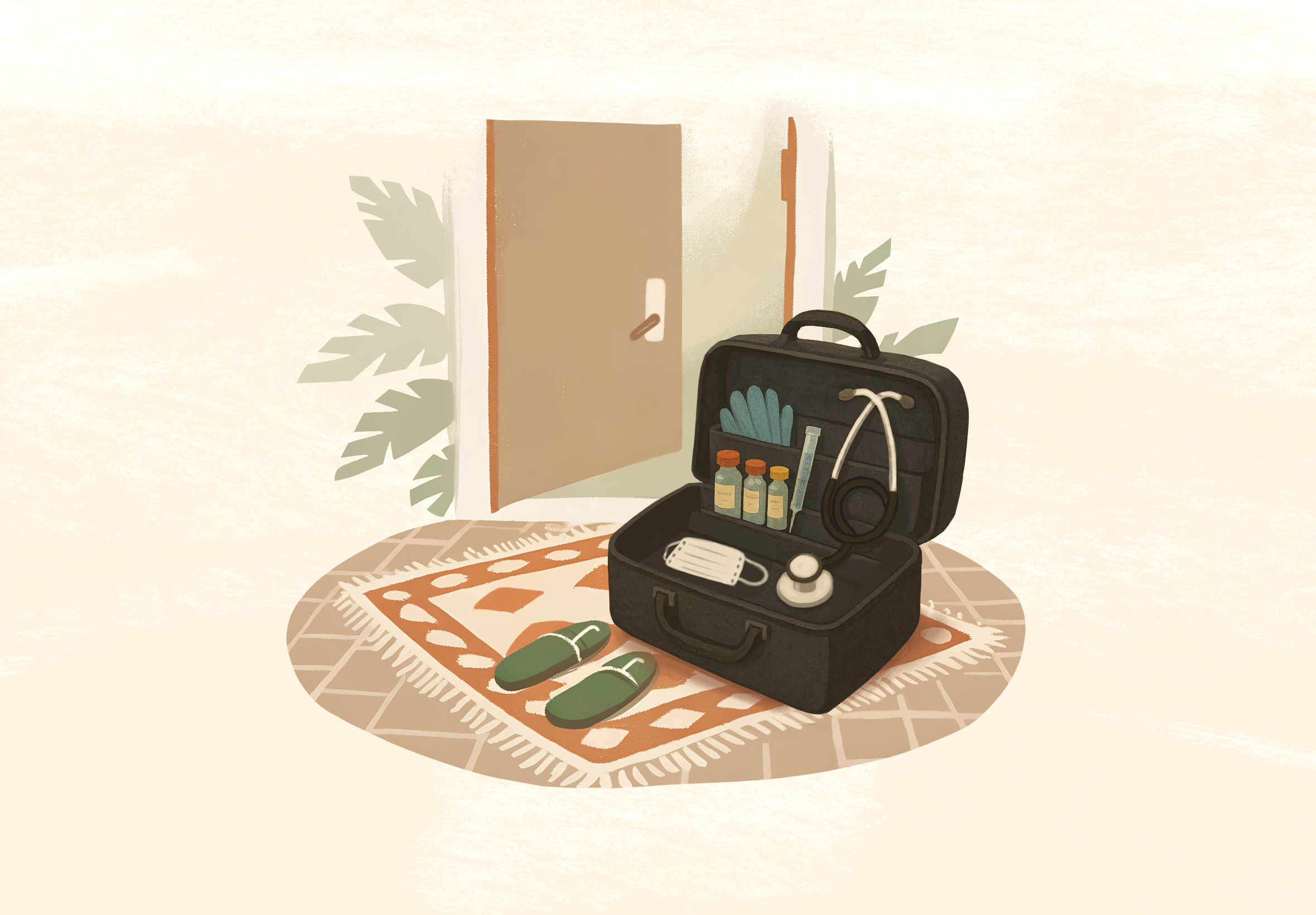Her Royal Highness Princess Dina Mired of Jordan is recognized globally as one of the most influential voices in the fight against cancer and non-communicable diseases. A relentless advocate for equity in health, she has transformed cancer care in Jordan through her leadership of the King Hussein Cancer Foundation, and later brought that lived experience to the global stage as the first Arab and the first non-medical professional to serve as President of the Union for International Cancer Control (UICC).
Princess Dina has also played a historic role at the United Nations. In September 2011, she was elected to deliver the keynote speech on behalf of all civil society at the opening of the UN General Assembly’s first-ever High-Level Meeting on non-communicable diseases (NCDs). In September 2018, she was once again chosen to speak at the third High-Level Meeting on NCDs as an “Eminent Champion of the Fight against Non-communicable Diseases.”
Known for combining systems thinking with the authenticity of being a mother of a cancer survivor, Princess Dina has been a driving force in changing how the world views cancer—not as a privilege of the few, but as a universal right. Her global leadership has been recognized with numerous awards, including being named in 2023 as one of the “100 Influential Women in Oncology” by OncoDaily, receiving the Centenary Medal from His Majesty King Abdullah II in 2022, the WHO “World No Tobacco Day” Award in 2021, and the International Agency for Research on Cancer (IARC) Medal of Honour in 2015.
Today, through her many roles and her own podcast Global Health Dialogues, she continues to champion equity, amplify patient voices, and push for global solidarity to ensure that no patient is left behind—whether in high-income countries, low-resource settings, or conflict zones.
Personal Journey
1. Your Royal Highness, you are recognized globally as a relentless advocate for cancer control. As a member of the Jordanian Royal family, you have had a unique platform to influence change both at home and on the global stage. Your career spans humanitarian work, health advocacy, and international diplomacy. For those less familiar with your journey, could you share the turning point that inspired you to dedicate your life to this cause?
Thank you for this question. While being a member of the Jordanian royal family has given me a platform, my path into cancer advocacy was not born of privilege but of necessity.
I often say, “I didn’t choose cancer. It was never on my radar. But cancer chose our family…” Our son was diagnosed with leukemia at barely two years old, and in that moment, I became, like everyone else, a mother battling cancer with her child. However, I also recognised that we were of the lucky few who at the time could access treatment for their son abroad at one of the best cancer centers worldwide. It conflicted me to think about all those millions of other parents who did not have that chance to offer a lifesaving treatment for their children?
The title most reassuring is am—the mother of a cancer survivor—a title I wear with profound gratitude and responsibility.
That personal journey opened my eyes to the profound inequities faced by patients and families. I realized that if I, with access and resources, could struggle so much, then what of those with far less? That realization became my lifelong mission.
KHCF
2. You led the King Hussein Cancer Foundation for 15 years, transforming it into a world-class institution and playing a pivotal role in the development of the King Hussein Cancer Center, now recognized as a world-class institution for cancer treatment. What lessons from that journey continue to shape your thinking today, and what was the most challenging part of leading such a transformation?
When I assumed leadership at the King Hussein Cancer Foundation, the landscape of cancer care in Jordan was starkly different from what it is today. Cancer was still spoken of in hushed tones—people referred to it simply as “that disease.” The King Hussein Cancer Center itself was viewed more as a terminal ward than a place of recovery. Our greatest challenge was to change both the perception of cancer and the system of care that supported patients.
We knew that to build trust, we had to deliver quality care so that people can believe that they can actually survive cancer. During my tenure as CEO, we mobilized more than $360 million—not as charity, but as a national and regional investment in survival and dignity. With those resources, we built a world-class institution that saves lives, not only for Jordanians but also for patients across the region. But the transformation wasn’t just about bricks and mortar—it was about shifting culture, policy, and expectations.
One of the most important lessons I carry from that journey is that stigma is as dangerous as the disease itself. If patients and families are too ashamed or afraid to seek care, survival rates will never improve. We worked hard to normalize conversations about cancer and spread a message of hope.
Just as crucial was ensuring local ownership, careful planning, and a clear focus. We did not simply import a model from abroad; we built a system rooted in Jordan’s needs, capacities, and realities. That sense of ownership gave people pride, strengthened accountability, and secured long-term commitment.
Another enduring lesson is that transformation is never a solo endeavor. It was the dedication of communities, governments, philanthropists, medical professionals, and patients themselves that made progress possible. I must emphasize that none of this would have been achieved without the extraordinary team at the Foundation and the Center. It truly was a team effort. From board members, doctors, and nurses to fundraisers, administrators, volunteers, everyone shared one vision: that Jordan deserved a cancer center on par with the best in the world, and that our patients deserved nothing less.
Finally, I learned that leadership in cancer control demands both resilience and compassion. You have to be strong enough to withstand resistance, but also human enough never to lose sight of the people at the heart of the mission. The most difficult part was living through the gap between vision and reality—seeing patients, especially children, suffer while we were still building the infrastructure that could save them. That was heartbreaking, but it was also my greatest source of motivation.
Today, when I see the King Hussein Cancer Center recognized as a global model for excellence, I feel both humbled and affirmed. It is proof that with determination, teamwork, local ownership, and a clear focus, we can build systems of world-class cancer care even in regions where people once thought it could not be done.
UICC
3. In 2016, you were elected to lead the largest Global Union for Cancer Control- Union for International Cancer Control (UICC). As the first Arab and the first non-medical professional to lead UICC, how did you bring a fresh perspective to a field often dominated by medical and technical voices?
When I was elected to lead the Union for International Cancer Control (2018-2020), I knew I was bringing something different to the table. I was not a doctor or a scientist. I came as the mother of a cancer survivor, someone who had walked every step of the journey with my child—from diagnosis, through treatment, through fear and hope. That gave me something that cannot be learned in textbooks: the patient perspective, rooted in lived experience.
At the same time, I had also been part of the team that transformed cancer care in Jordan, a middle-income country where we had to build systems almost from scratch. That work taught me about the very real challenges—financial, social, and systemic—that patients and providers face in resource-constrained settings. But it also showed me the opportunities: that with vision, planning, teamwork, and local ownership, you can deliver world-class cancer care even in places where people once thought it impossible.
So, when I became President of UICC, I brought not only advocacy but credibility. I was speaking as someone who had lived on both sides of the fence: as a mother navigating the system both abroad and in Jordan, and as a doer helping to build one. That dual perspective allowed me to say to ministers, donors, and experts: “This is not just theory. This is what works, this is what hurts, and this is what patients need.”
I also understood that health today is delivered by systems. It is no longer about one heroic doctor—it’s about prevention, early detection, treatment, palliative care, and navigation all working together as part of a functioning whole. And because of my platform, I was able to take this lived experience and amplify it to a much larger global audience.
That, I believe, was my real contribution: bringing humanity, authenticity, and practical experience into a field too often dominated by statistics and academic theory, and insisting that the voices of patients and the realities of low- and middle-income countries must sit at the center of the global cancer agenda.
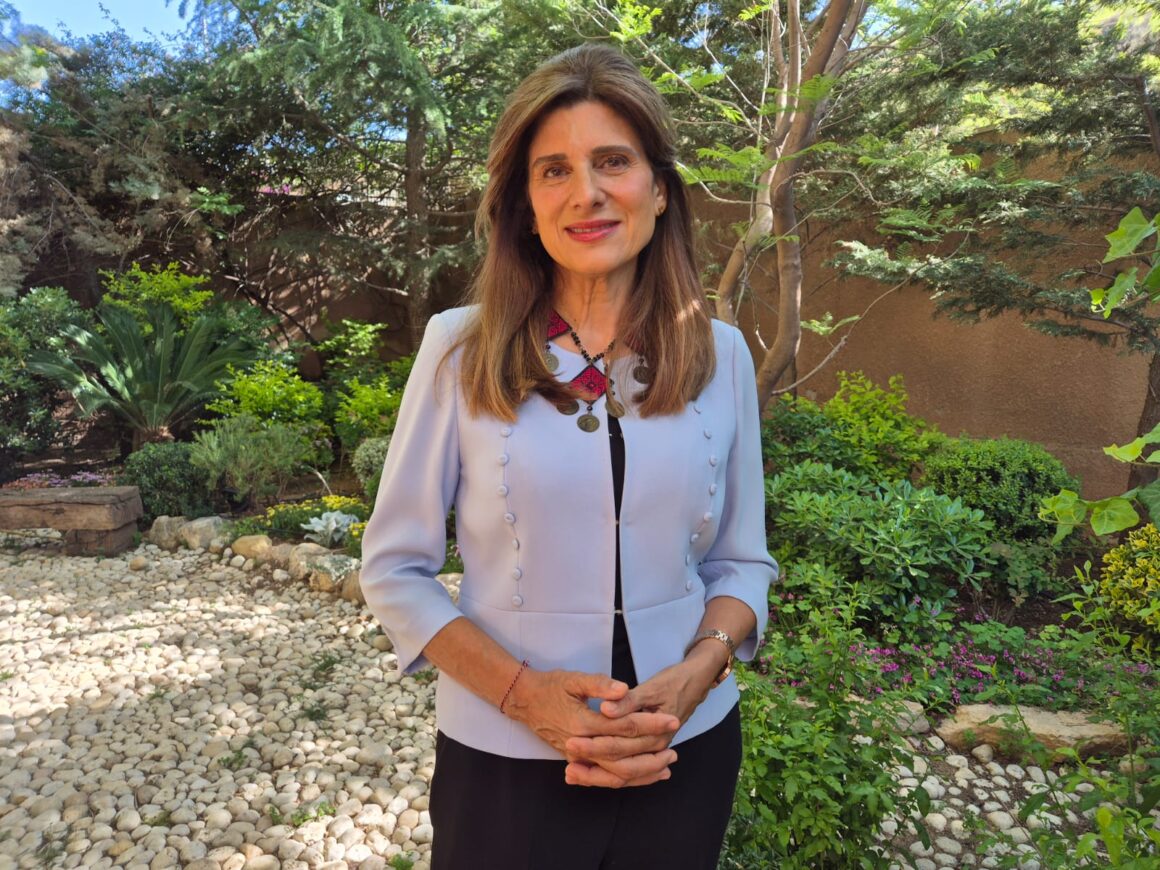
Equity
4. During your presidency at the Union for International Cancer Control (UICC) 2018- 2020, you made equity a central priority, especially in addressing the urgent needs of low- and middle-income countries. From your perspective, what are the most persistent inequities in cancer control between high- and low-resource settings, and what strategies or opportunities do you believe are most effective in closing these gaps? And how do you think the international community can bridge it?
Equity was always at the heart of my presidency at UICC. The numbers speak for themselves: 70% of global cancer mortality occurs in low- and middle-income countries, yet these countries have the least access to early detection, diagnostics, treatment, and palliative care. That stark reality made it very clear to me—this is where the work must be done.
As we speak, the inequities remain persistent and painful. In high-income countries, survival for childhood leukemia can reach 90%, while in parts of Africa it is as low as 10%. It is not because the science is different, but because the systems are absent—there are no diagnostics, no medicines, no radiotherapy, and no trained staff in many settings. This is a moral injustice that we absolutely must never accept.
The heart of the inequity issue starts with how we frame health—and cancer in particular. Closing these gaps requires a shift in multiple mindsets. We must stop seeing cancer care in LMICs as “too expensive” or “too complicated.” Too often, health is seen as a cost rather than as an investment. That mindset alone creates a huge barrier, especially in low- and middle-income countries, because it discourages governments and partners from committing the resources and strategies needed to build strong cancer systems.
Another mindset that urgently needs to change is the fragmented way governments often approach cancer control. Cancer as a disease operates comprehensively—seizing every opportunity to spread and take lives. Yet, too often, our response is siloed, piecemeal, and disjointed, leaving the door wide open for cancer to continue its deadly work. What good is it to expand treatment if, at the same time, you ignore prevention—like the fight against tobacco, which remains the leading cause of cancer worldwide? And what good is it to fix treatment whilst failing to tackle late diagnosis and neglecting to build systems for early detection? Any lapse of action across the continuum of care only fuels cancer.
Another challenge is that health systems rarely borrow from the business world when it comes to solving problems. In other sectors, planning, metrics, and efficiency tools are second nature. Yet in health—and particularly in cancer control—we often overlook these. We focus on the money alone, rather than on the systems, governance, and planning structures that ensure every dollar is used effectively.
This is where I believe the greatest opportunities for progress lie. Yes, cancer control requires resources, but it is not just always about a lack of money. It is about creating sustainable governance structures, finetuning systems, and designing patient navigation routes so that individuals do not get lost in fragmented care. It is about identifying and addressing bottlenecks—whether in diagnostics, workforce, or supply chains—and building accountability into every step of the process.
And here, the role of the global donor community must be acknowledged. Whilst local accountability and ownership are crucial, the global donor community also has a responsibility to align with local cancer control plans. Too often, well-meaning donor programs skew or even disrupt local planning, causing duplication and pulling focus away from national priorities. This is one of the main reasons many LMICs—especially in Africa—have been delayed in building sustainable cancer infrastructure. Global health aid historically flowed toward infectious diseases, leaving cancer and other non-communicable diseases largely unsupported.
If we are to close these inequities, the global donor community must evolve from short-term, vertical programs to long-term, system-building partnerships that strengthen local capacity. Equity will not come from charity or from imposing outside agendas. It will come from respecting local priorities, investing in sustainable systems, and treating health as an investment in people, dignity, and development.
If the international community truly wants to make an impact, it must commit to long-term partnerships that strengthen local ownership, empower local professionals, and ensure that every patient—regardless of where they live—has the chance not just to fight cancer, but to survive it.
UHC
5. You have been a strong advocate for integrating cancer treatment into universal health coverage. From your perspective, what progress has been made in this area, and what challenges still remain? You often speak of the “invisible cost of delayed diagnosis.” How can global health systems better integrate early detection and diagnostics—not only as a matter of equity, but also as a cost-effective strategy?
I have always believed that if we are serious about equity, cancer treatment must be integrated into universal health coverage. We cannot call health “universal” if it excludes one of the leading causes of death worldwide.
But the challenges remain immense. Too often, cancer is still treated as a privilege rather than a necessity. This is why I always say, “everyone is poor before cancer.” No matter your income level, when cancer strikes, the costs are catastrophic. Families, especially in low- and middle-income countries, are devastated by out-of-pocket expenses—selling their homes, depleting their savings, or abandoning treatment altogether because they simply cannot afford it. That is one of the deepest inequities we must confront.
When a country is truly serious about implementing UHC, it must first restructure the health systems they inherited, which were designed decades ago mostly to respond to infectious diseases. That means going beyond patchwork fixes and instead addressing inefficiencies, bottlenecks, and gaps across the entire continuum of care. It also means updating and finetuning systems with the tools we have today—such as digital health and artificial intelligence—to improve diagnostics, streamline patient navigation, and ensure continuity of care. Most importantly, it means designing systems that are adapted to the needs of people, rather than forcing people to adapt to fragmented systems. UHC will deliver the intended results when implemented on an efficient running system.
This is why I often highlight the “invisible cost of delayed diagnosis.” The price is not only in lives lost but in the much higher financial burden of treating late-stage disease compared to catching it early. A woman diagnosed with breast cancer at stage I can often be treated at a fraction of the cost of treating advanced disease, with a far greater chance of survival.
So the way forward is clear: integrating early detection and diagnostics into UHC as a central pillar, strengthening governance and accountability, and rethinking health spending not as a drain but as a smart investment in people, dignity, and national productivity. If we ignore this, cancer will always remain “too expensive.” But if we build systems that are modern, people-centered, and equity-driven, we can save both lives and resources—and make universal health coverage truly universal.
My own country Jordan, is undergoing a complete overhaul of its UHC plans, and there are encouraging examples—such as Georgia, which integrated diagnostics into its UHC package and doubled access to cancer care—proving that when governments prioritize cancer, progress is possible.
Childhood Cancer
6. Childhood cancer survival rates remain starkly unequal worldwide. As a former Patron of SIOP, how do you see initiatives like WHO’s Global Initiative for Childhood Cancer changing the landscape, and what role do patient advocacy and philanthropy play in this fight?
Childhood cancer is one of the most heartbreaking examples of inequity in global health. In high-income countries, survival rates for childhood cancers like leukemia can reach 80–90%, while in some low-income countries they can be as low as 10%. The science is not different—the children are not different—the difference is access to timely diagnosis, treatment, and supportive care. And as I often say, a child’s chance for treatment should not be an accident of geography.
This subject is also deeply personal for me as the mother of a cancer survivor. I could not imagine, even for one second, knowing that a miracle drug exists that could save my child—but that it was not available to me because of where I lived or by how much is in my bank account. Yet this is the daily tragic reality for countless parents across the developing world. That moral injustice is what drives me, and it is why I will never stop speaking about childhood cancer.
But here is what troubles me deeply: childhood cancer should never be treated as a siloed, stand-alone issue. We should not have to advocate for saving the life of a child as if it is somehow separate from the right to deliver lifesaving treatment to an adult. Many underfunded diseases and patients suffer precisely because of this fragmented, “chopping up” approach—where we put people into categories instead of building health systems that serve everyone. What we need is comprehensive, people-centered cancer care across the life course, not labels that divide and dilute action.
This is why initiatives like the WHO’s Global Initiative for Childhood Cancer are vital: they put the issue on the global health agenda in a way it has never been before, while also helping countries design national strategies, build capacity, and strengthen systems step by step—whether through training health workers, improving access to diagnostics, or ensuring essential medicines are available. But if we are to truly accelerate the fixing of childhood cancer, the global community must support the WHO initiative with the full might of its resources—financial, technical, and political. Only then will we give every child, everywhere, a fair chance at survival.
Partnerships
7. Partnerships have been a hallmark of your work—you have spoken about the role of St Jude and the City Cancer Challenge model, and many others. In your view, what makes a partnership transformative rather than transactional?
Partnerships have been central to my work, whether through global collaborations with St. Jude or innovative models like City Cancer Challenge. But I have always believed that there is a profound difference between a transactional partnership and a truly transformative one.
A transactional partnership is often short-term, donor-driven, and focused on ticking boxes. It can even disrupt local systems by duplicating efforts or imposing outside priorities. In contrast, a transformative partnership starts with listening to local needs and aligning with local plans. It respects national ownership, builds capacity rather than dependency, and leaves behind something sustainable long after the international partner is gone.
I often say that I credit St. Jude for standing with us from the very beginning. From 2002 until today, St. Jude has been an extraordinary partner to the King Hussein Cancer Foundation and Center. They opened their doors to us—training our doctors and nurses, offering fellowships, providing lifesaving second opinions, and much more. Personally, I can say that I learned everything I needed to know about how to build the foundational work for King Hussein Cancer Foundation from St. Jude and ALSAC. That is the essence of a partnership that transforms lives and institutions.
I also deeply admire the work of Partners In Health and the late Dr. Paul Farmer, particularly in Rwanda. He showed the world that even in the most resource-constrained settings, it is possible to deliver world-class care if you invest in systems, train local staff, and—most importantly—treat patients with dignity. But what made Rwanda’s story so remarkable was not only PIH’s commitment—it was the Government of Rwanda’s vision and leadership. The government prioritized health, embraced partnership, and built policies that enabled long-term sustainability. Without that level of government ownership and accountability, even the best-intentioned partnership would have struggled. Rwanda today stands as a model of how global solidarity combined with national leadership can achieve lasting change.
What makes a partnership transformative is not the size of the funding, but the quality of the relationship: trust, mutual accountability, and a shared vision.
At City Cancer Challenge, for example, the beauty of the model is that it empowers cities themselves to define their cancer priorities, while partners bring expertise, resources, and solidarity. Similarly, with St. Jude and Partners In Health, their work is powerful precisely because it is about building global capacity, not just exporting a single program.
For me, the litmus test is simple: does the partnership strengthen systems, empower local actors, and improve equity of access for patients? If the answer is yes, then it is transformative. If not, it risks becoming just another transaction in a world where patients cannot afford time or wasted effort.
8. As Honorary Patron of European Organisation for Research and Treatment of Cancer (EORTC), tell us about your advocacy for global access to clinical trials
As Honorary Patron of EORTC, a role I proudly took on after His Highness Prince Albert of Monaco, my message is simple: clinical trials are not a privilege, they are a right. They represent hope, often the only hope, for patients when standard treatments fail. Yet today, access is still concentrated in high-income countries, leaving patients in the Global South.
As Patron, we are working with EORTC to expand access to the MENA region, building a sustainable governance structure that ensures that the MENA region is not only involved in European clinical trials, but that we also begin to develop our own trials in the future—trials that reflect our own cancer burden and our own populations.
We must all break this inequity. Trials should not depend on your postcode. They must be integrated into health systems everywhere, designed with patient voices at the table, and supported so that results reflect the diversity of the real world. Only then can we truly say science is serving humanity, not just a privileged few.
Humanitarian Response & Cancer in Conflict Zones
9. You have spoken with urgency about the plight of cancer patients trapped in conflict zones like Gaza and in refugee settings—people who are often invisible in humanitarian responses. What does it mean, in real terms, to uphold the right to cancer care in the middle of such crises? And how can the global cancer community ensure that non-communicable diseases like cancer are no longer sidelined or sacrificed in humanitarian health responses?
When we speak about the plight of cancer patients in conflict zones, we must first confront a brutal truth: cancer does not stop for war, borders, or bombs. A bullet may miss you, but cancer will not. And yet, in humanitarian responses, cancer patients are treated as though they do not exist.
Think of the definition of “safety” for a refugee. If you need blankets, food, or temporary shelter, then perhaps safety can be delivered. If you are injured and require trauma care, eventually safety can be delivered. But if you are a refugee with cancer, your definition of safety is obliterated. You may have escaped the violence outside, but the violence inside your body—cancer—continues its deadly work, with no chemotherapy, no radiotherapy, no surgery in sight. In those moments, safety is not yours. It belongs to cancer itself.
The war in Ukraine was a seminal moment for many of us in global health. For the first time, we witnessed unprecedented solidarity—first ladies, hospitals, and governments in neighboring countries working hand in hand to evacuate cancer patients and ensure their continuity of care. It was a hopeful step, a long overdue recognition that cancer patients must be part and parcel of emergency response.
And then came October 2023, and the genocide in Gaza. What little remained of humanitarian law and infrastructure was not just violated, but razed to the ground . The most basic tenets of emergency relief—food, water, shelter, medical access—were systematically denied to two million civilians. Hospitals, ambulances, pharmacies, even UN and Red Cross facilities, were targeted and destroyed. Doctors and other health personnel were killed or abducted. The Geneva Convention itself was buried under the rubble of Gaza.
Even before October, the cancer landscape in Gaza was grim. For 17 years, a blockade restricted movement of people and goods, stripping hospitals of medicines, equipment, and personnel. Radiotherapy—the cornerstone of modern cancer treatment—was denied altogether. Patients endured endless obstacles: shortages of drugs, no specialists, and Kafkaesque exit permits, with nearly half denied the chance to seek treatment outside. Many died from avoidable deaths.
But after October 7th, the situation descended into utter barbarity. The newly built Turkish cancer hospital was decommissioned. The pediatric cancer ward of PCRF was bombed. Cancer patients in Gaza now have no safe passage, no treatment, and no hope.
This is not only a failure in humanitarian relief infrastructure but a collapse of humanity itself. By stripping civilians of health protection during conflict, the world has set a dangerous precedent. Warlords everywhere are watching. They have learned that health can be weaponized with impunity, that patients can be starved, denied care, and bombed without consequence.
We cannot, as a global community, allow Gaza to become the model for future humanitarian response. We must reclaim equity and the sanctity of health as non-negotiable rights—for Palestinians, Ukrainians, Syrians, Yemenis, Sudanese, Armenians and all other refugees… even for the devil incarnate. and indeed for all civilians caught in war. Health must never again be a weapon of war.
I call for breaking the cancer of silence, I call for solidarity. We must demand that health protection in conflict is not optional, not selective, not conditional. What has happened in Gaza and is still happening must never be repeated. Not here, not anywhere. Not ever.
Leadership: Gender Equity
10. As a woman leader from the Global South in global health, what barriers have you encountered, and how have you transformed them into opportunities for change? And what advice would you offer to the younger generation following in your footsteps?
As a woman leader from the Global South, I have faced many barriers—some visible, many invisible. Often, in international forums, you feel that your voice must work twice as hard to be heard, and that your experience is sometimes measured against standards set elsewhere, usually in the Global North. I have also seen how women’s leadership is too often underestimated, or placed in a “supportive” role, rather than acknowledged as a driver of change.
But I believe in turning barriers into opportunities. Coming from Jordan and the MENA region, I brought perspectives and lived experiences that were missing from global health conversations. I spoke not from theory, but from practice—having led the transformation of the King Hussein Cancer Foundation, and having lived the journey of being a mother of a cancer survivor. These experiences gave me credibility and allowed me to speak with authenticity. Instead of seeing my background as a limitation, I used it as my strength.
Another challenge has been that cancer and NCDs in the Global South were often sidelined by the global health agenda. But rather than accept that, I pushed to put them on the map—arguing that we cannot talk about “universal health” while excluding the diseases that devastate most families in our region. Serving as the first Arab and first non-medical professional to lead UICC gave me a platform to challenge these imbalances and advocate for equity.
To the younger generation, my advice is this: do not wait for permission to lead. Your lived experience is your power. Use your voice, speak your truth, and don’t be afraid to push against systems that tell you to wait your turn. Leadership is not about where you come from—it is about what you stand for, and how relentlessly you pursue it.
Most importantly, remember that no leader succeeds alone. Build teams, nurture partnerships, and lift others as you rise. The world needs young leaders—especially from the Global South—who are fearless, compassionate, and equity-driven.
11. Your Royal Highness, you have recently started your own podcast, “Global Health Dialogues with Princess Dina” in collaboration with Oncodaily; what prompted you to do that?
For many years, I was always the interviewee. And I often felt that some of the most relevant questions I wanted to be asked never came and if they did one only had time for a sound bite. So, I decided it was time to turn the tables, to become the interviewer myself—so that I could bring forward the questions that matter, and shine a light on the issues, voices, and innovations that too often go unheard.
The idea behind Global Health Dialogues with Princess Dina really came from my belief that we need to break down the walls between policy, science, and lived experience. Too often, global health conversations happen in silos—among experts, policymakers, or donors—while the voices of patients, practitioners, and communities are left out. I wanted to create a platform where all those voices in the healthcare ecosystem could meet, and where stories and strategies could be shared openly and accessibly.
Working with Oncodaily gave us the right partnership to bring this to life. Together, we wanted to build a space that is not only about exchanging knowledge but about inspiring action. Every episode is designed to spotlight in a deep dive both challenges and solutions—always through the lens of equity. For me, this podcast is about connection—connecting people, ideas, and hope. Because if we are serious about achieving equity in health, then we must listen to each other and learn from each other.

